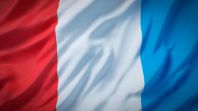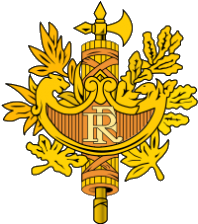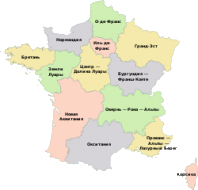|
|
 |
France - country information |
 |
Veliky Novgorod - Russia |
 |
Riga - Latvia |
 |
Helsinki - Finland |
 |
Nha Trang: the weather has normalized, but the infrastructure has not been restored yet |
 LATEST REVIEWS
LATEST REVIEWS
 |
Choosing a portable toilet |
 |
Plumbing faucets, the best of the best |
 |
Green crops |
 |
Dishwasher – freestanding, built-in or compact? |
 |
How to choose a dishwasher - what you need to know |
 Countries and cities
Countries and cities Information, materials about France/France
Information, materials about France/France France - country information
France - country information France - country information
France - State flag and coat of arms, territory and geography, administrative structure, population, sights and cities ...
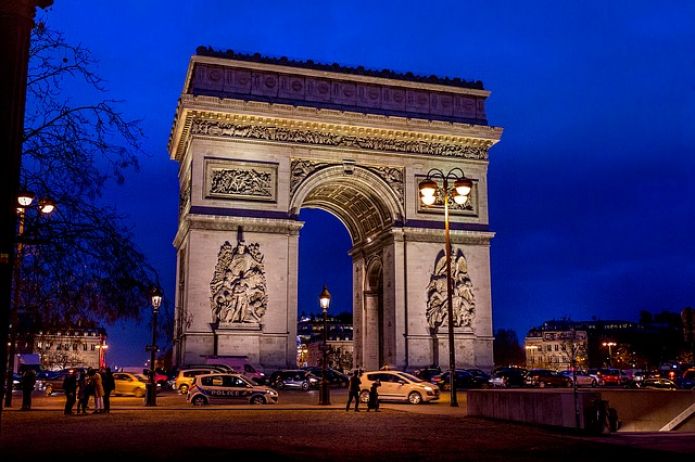
The official name of the country is the French Republic
The republic is located in Western Europe, from the west it is washed by the Bay of Biscay between Belgium and Spain, from the north via the English Channel it borders with Great Britain, from the south it is washed by the waters of the Mediterranean Sea, between Italy and Spain.
Capital of france
The main administrative and political city of Paris.
National flag of the French Republic
|
|
State Emblem of France
|
It is the shield of the left side, ending with the head of a lion, and with the right head of an eagle, in the middle is placed the monogram “R.F” which means - French Republic. The shield is decorated with an olive branch symbolizing peace and oak symbolizing wisdom. Behind the shield is a fascia representing a bundle of elm or birch twigs (an attribute of higher magistrates). An ax is fastened in the fascia - signifying the right of magistrates to judge or favor. |
Official currency
Euro.
Population of france
The population is 64,859,773 people (as of 1997) and, taking into account overseas territories, 66,991,000 people.
Tongue
The official language of the state is French, the majority of the population speaks it.
Administrative arrangement of the French Republic
|
|
Territory and geography
The territory of France - 547 030 km²
Weather in France
In total, there are three types of climate: oceanic (in the west), Mediterranean (in the south), continental (in the center and in the east).
Tourism in France
France is the first tourist destination in Europe, and this should not be surprising, because France is a country that has many tourist attractions, monuments, historical and other places. France is widely known for its wines and cheeses, which encourages many to go on a gastronomic tour.
Natural Heritage:
Among European countries, France has a surprisingly diverse natural environment - it extends from Normandy to the vast hilly landscapes of Champagne de Boz, alpine peaks, northern spruce forests or to dry bushes of the Mediterranean - not to mention the arid highlands or a diverse coastline bordering the Northern Sea , La Manche, the Atlantic Ocean and the Mediterranean Sea.
It would take an entire encyclopedia to compile a complete list of all natural tourist sites and thousands of other natural sites in France.
The country has six national parks, 43 regional parks, hundreds of areas included in the list and protected by the official European program Natura 2000.
National parks:
Cévennes (Languedoc)
Les Ecrins (Provence-Alpes)
Mercantour (Provence)
Pyrenees (Provence-Alpes)
Vanoise (Provence-Alpes)
Port-Cros (Park, Var, Provence)
Amusement Parks in France
In France, there are more than 100 amusement parks, including parks of all categories such as Disneyland Paris, or animal parks and aquariums, as well as ekomusei such as the large eco-museum of Alsace.
Among the most popular you can visit:
Euro Disneyland - (40 km from Paris)
Amusement Park "Asterix" - (to the north 40 km from Paris)
Puy du Fou - (park of historical sights, Vendée 400 km from Paris)
Ermenonville - (Theme Park Mer de Sable and Jean-Jacques Rousseau Park, 40 kilometers north of Paris)
Futuroscope - (amusement park, 330 km. from Paris, near Poitiers)
Vulcania - (amusement park, 430km. from Paris, near Clermont-Ferrand, Auvergne)
Miniature of France - (to the west, 35 km from Paris, amusement park in Elancourt, miniature replicas of large buildings and monuments of France)
Ecological theme park in Alsace - (Eco-Museum of Alsace, 540 km from Paris, near Colmar, France's largest eco-museum)
Nigloland - (amusement park 220 km from Paris, near Troyes, in Champagne.)
Regions of France and their attractions
|
|
|
|
Aquitaine |
Auvergne |
|
Brittany |
Center Val de Loire |
|
Burgundy |
Champagne |
|
Franche-Comte |
Languedoc |
|
Limousin |
Lorraine |
|
Southern Pyrenees |
North of France |
|
Pye de la loire |
Picardy |
|
Poitou charente |
Rhône-Alpes |
France has fifteen elements included in the UNESCO Intangible Cultural Heritage List.
- Carnival Granville
- Feast of fire and summer solstice in the Pyrenees
- Gwoka: music, songs, dances and cultural practices represented by representatives from Guadeloupe
- Falconry - a living human heritage
- Fest-noz - a festive meeting, founded by a team practicing traditional dances in Brittany
- Horseback riding french tradition
- Shop system, network of transfer of knowledge and certificates for the profession
- Gastronomy of France
- Know-how lace point d'Alençon
- Aubusson Tapestry
- Cantu in paghjella traditional Corsican songs performed by men
- Maloya is music, singing and dance created by slaves from the Madagascar core.
- Traditions of the French carpentry workshop
- Procession of giants and dragons inherent in the local folklore of Belgium and France
- Procession ostensions in Limoges
Eat and drink in France
France is known worldwide for its "gastronomy", its restaurants and good wines. Foreign tourists are often surprised to find that they can find very good quality restaurants in small provincial towns, and that many of these restaurants offer first-class menus for a fraction of the price that would be paid for something like that at home.
There are several guides who approve and list the best restaurants, the most famous of which are the Michelin Guide and the Guide by Gaulle Millau, but there is no directory that lists all the good restaurants in France, because there are so many of them.
On the other hand, some are far from tourist flows, these are simple village or small village restaurants, whose cuisine, although it is tasty, well prepared and nutritious, is not necessarily considered "high gastronomy".
French national dish
Pot-au-feu
With the onset of cold weather in France, winter dishes return to the menu. It is probably the greatest success with the French.
 THEMATIC MATERIAL
THEMATIC MATERIAL
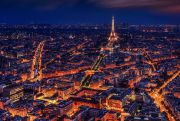 |
Paris - France |


|
 |
| © tour-planet.com 2017 - 2025 |
Copying of texts, photos and other information for re-publication on other resources is allowed only with the written permission of the site administration. |
